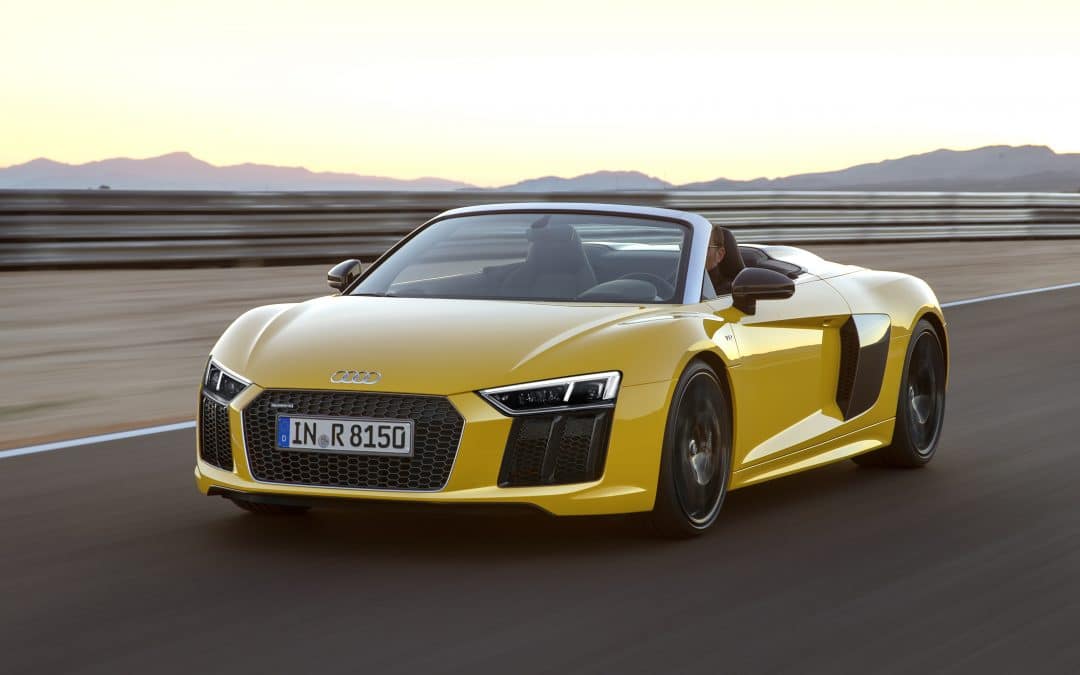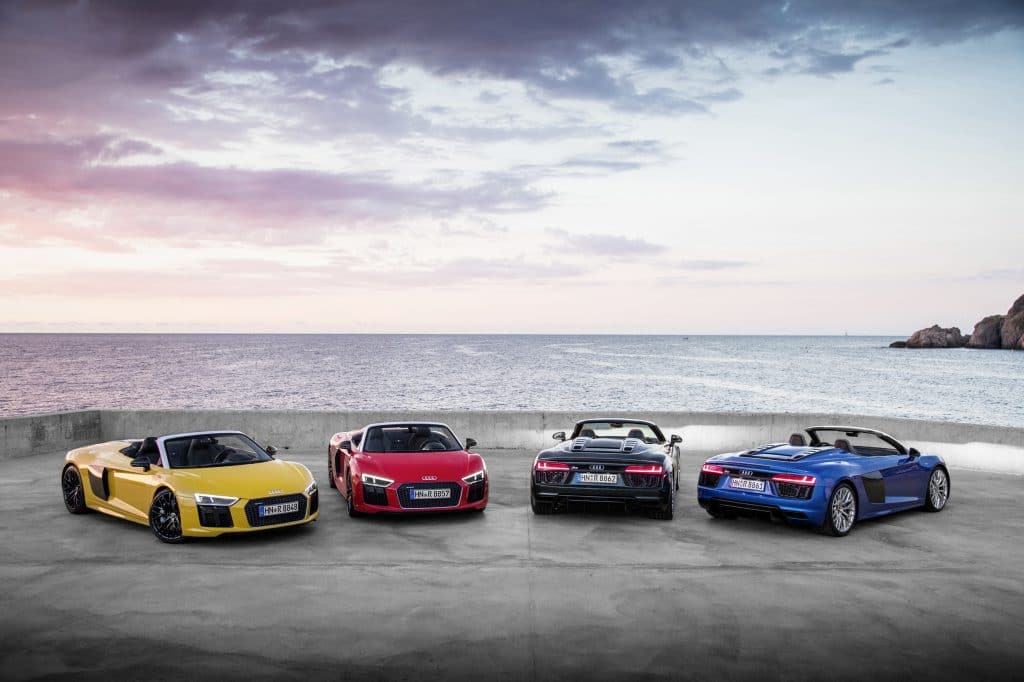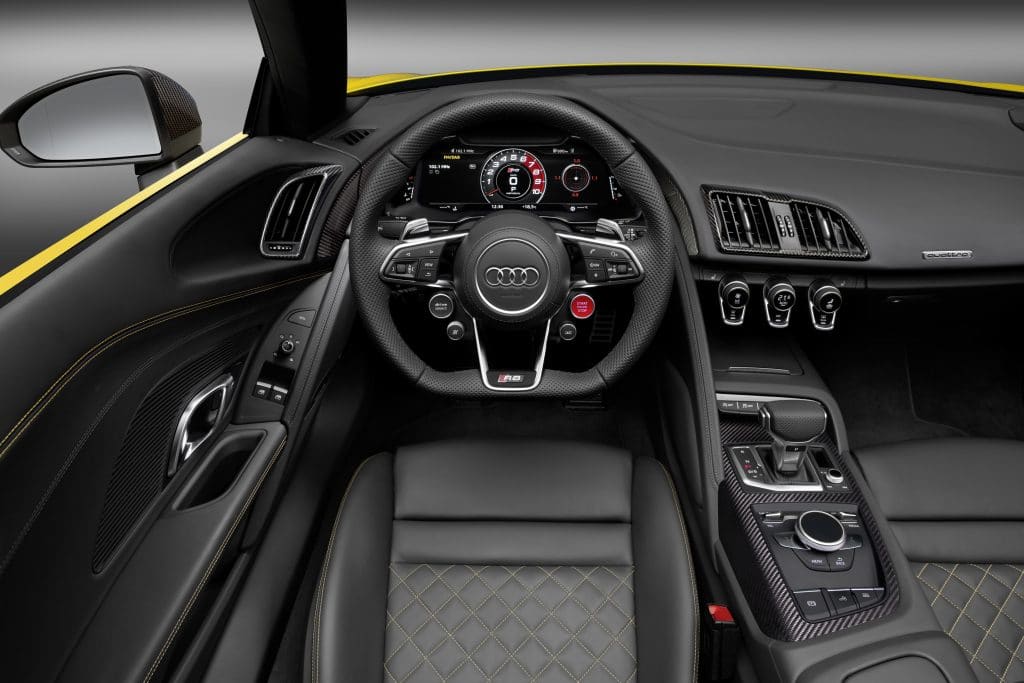Audi South Africa’s second generation R8 Spyder has dropped its top and hit the streets of Mzansi with its 397 kW V10 in toe. This powerplant propels the vehicle from 0 to 100 km/h in 3.6 seconds, while the Audi takes just 11.8 seconds to complete the sprint from 0 to 200 km/h, on to a top speed of 318 km/h.
According to Audi, NEDC fuel consumption has declined by ten percent thanks to potent efficiency technologies that includes a cylinder on demand (COD) system that deactivates one cylinder bank at low to intermediate load, plus the dual injection system injects fuel directly in to the combustion chambers (FSI) and into the induction pipe (MPI) as needed. When the car comes to a stop, a start-stop system deactivates the engine. The new Audi R8 Spyder thus consumes a claimed average of 11.7 litres of fuel per 100 kilometres.
Equally as impressive is this Audi’s lightweight (44 kg) soft top, which is activated at speeds of 60 km/h and above in extra-urban areas. An electro-hydraulic drive opens and closes the top in just 20 seconds at speeds up to 50 km/h. With all windows up, the air stream strokes the R8 Spyder with a minimum of turbulence.
Illuminating the future path of intelligent lighting systems
The R8 Spyder V10 boasts Audi’s sublime laser light, which increases the range of the high beam and thus provides the driver with added visibility and safety. An intelligent camera-based sensor system detects other road users and actively adjusts the light pattern to dim the light intensity specifically for them. The presence of the Audi laser light is indicated by the lighted, anodized blue strips dividing the headlights. It is combined with dynamic turn signals up front, which run from the inside out with a cycle time of 400 milliseconds. This feature is standard at the rear.
Inside the cabin, the standard Audi virtual cockpit provides drivers with a fully digital display that presents all information in richly detailed, tack-sharp 3D graphics. This 12.3″ diagonal TFT display enables the driver to switch between interfaces by pressing the “View” button on the steering wheel. In infotainment mode, the navigation map or lists from the Telephone, Radio and Audio areas appear in a large central window – while the tachometer and speedometer appear as small dial instruments on either side of this display window. In the classic view, the instruments are approximately as large as analog instruments, and the centre display window is therefore smaller.
Standard Equipment
The Audi R8 Spyder will be available in South Africa with the following equipment offered as standard:
• 19″ 5 V spoke design wheels
• Bluetooth interface
• MMI Navigation plus with MMI touch
• Audi Virtual cockpit
• Bang and Olufsen Sound system
• Comfort key
• Cruise control
• Deluxe automatic aircon with sun sensor
• Fine Nappa leather for R8 Sport seats
• Seat heating
• Seat belt monitoring
• Front side airbags with head airbag
• LED headlights
• LED rear lights
• Parking aid plus
• Seats electrically and pneumatically adjustable
• Tyre pressure monitor
• Tyre repair kit
• R8 performance leather steering wheel with multifunction plus and 2 control satellites
• Exterior mirrors electrically adjustable and heated
• Inlays in anthracite paint finish
• Side blade in ice silver metallic
• High gloss package
• Wind deflector
• quattro
Pricing
The Audi R8 Spyder will be priced as follows, inclusive of VAT and all taxes and standard with the five year or 100 000km Audi Freeway Plan.
• Audi R8 Spyder V10 quattro S tronic: R 2,905,500
In other motoring related news, Mercedes-Benz recently introduced its new GLA SUV.




